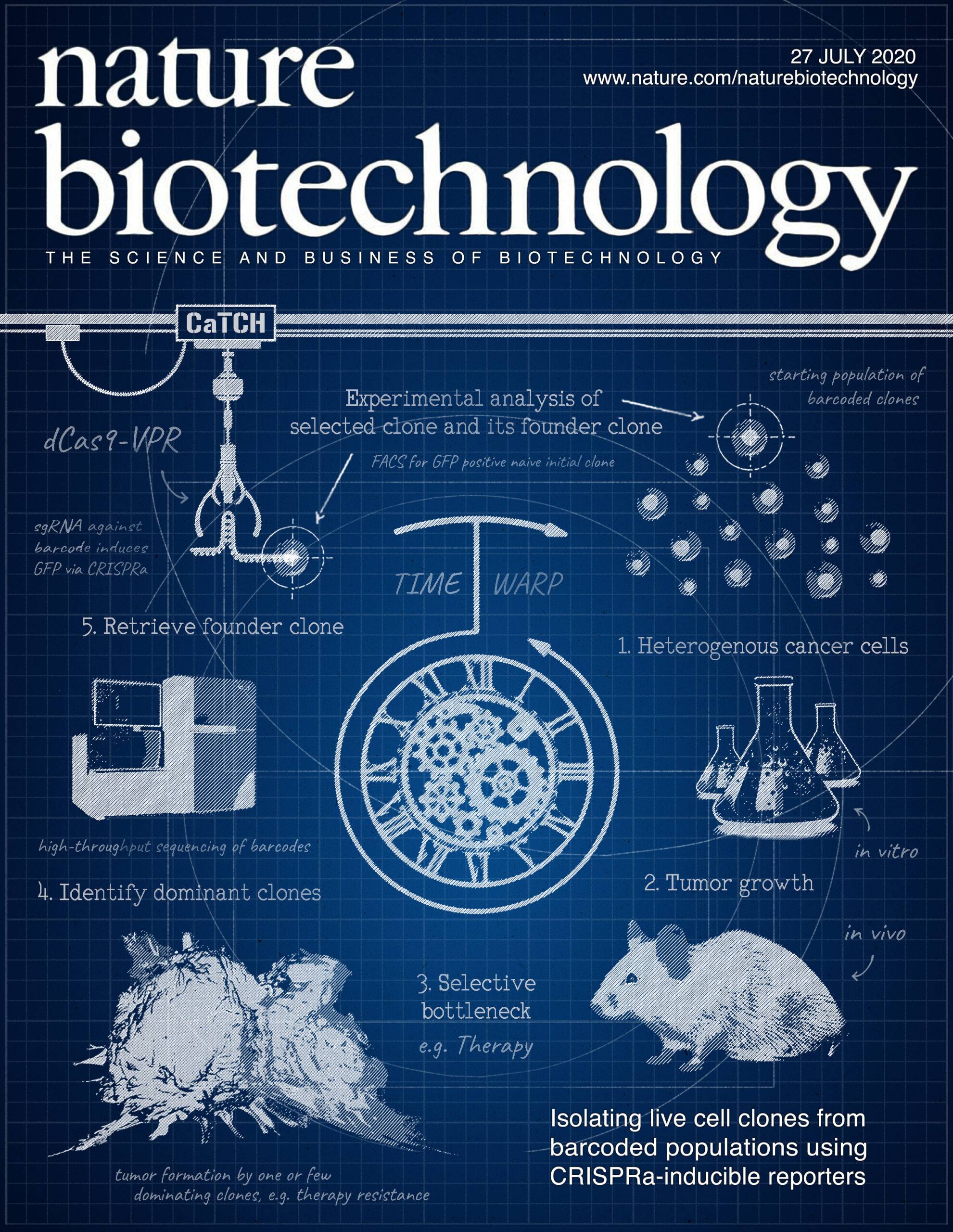CaTCH - A Molecular Time-Machine for Cells
The Science
Metastasis, a critical phase of cancer where the disease spreads, causes over 90% of cancer deaths. Recently, treatments have shifted from non-specific chemotherapy to targeted therapies that aim to disrupt specific pathways in cancer cells. Despite initial success in controlling tumor growth, metastatic cancer often leads to drug-resistant strains that can cause a relapse. Researchers are trying to determine if these resistant cancer cells are already present in the initial tumor or if they develop resistance during treatment. Identifying these original resistant cells, especially while they’re still viable, is a significant challenge.
To tackle this, a team from the IMP Vienna developed CaTCH, a method that labels each cancer cell with a DNA ‘barcode’, allowing scientists to track and isolate individual cells before and after they develop resistance. This system uses CRISPR technology to make the cells glow for easy identification and sorting. Their study reveals that resistance to certain drugs in melanoma largely develops during treatment, not from pre-existing conditions. This discovery could lead to new strategies to prevent cancer cells from adapting to therapies, potentially improving treatment effectiveness. This technique, likened to a ‘molecular time machine’, could revolutionize how we understand and address cancer progression and treatment resistance. Curious about details? Check out the paper!
The Art
The concept of CaTCH is conveyed through a schematic blue architectural blueprint, reminiscent of an inventor’s initial vision come to life. Detailed illustrations showcase the journey from a diverse population of cancer cells to the identification and isolation of single clone cells, using barcodes and CRISPR technology. Central to the design is a metaphorical ‘time warp’ gear, symbolizing the retrospective analysis of dominant cancer clones, a process crucial for understanding tumor progression and resistance.



